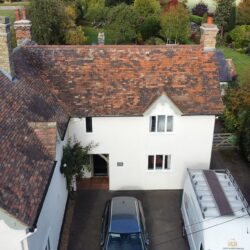Summary
Professional fire damage cleaning companies tackle smoke odor and residue through a thorough, specialized process designed for safety and effectiveness. After assessing affected areas and identifying the type of smoke, technicians implement safety measures before using advanced odor-removal techniques like thermal fogging, ozone treatment, or hydroxyl generators. They carefully clean soot through dry and wet methods, along with HEPA vacuuming, to prevent further damage. HVAC systems and ducts are inspected and cleaned to eliminate hidden smoke, while final deodorization and restoration, including sealants and surface treatments, ensure lingering odors are gone. Unlike DIY efforts, which often spread soot or miss hidden residues, professional services provide comprehensive, safe, and lasting results for homes and businesses after a fire.
–
Introduction
Experiencing a fire in your home or business is devastating. Even after the flames are extinguished, the lingering effects of smoke odor, soot, and residue can continue to affect your property and health. This is where professional fire damage cleaning companies step in. But how exactly do they eliminate smoke odor and residue safely? Let’s break it down.
Understanding the Impact of Smoke Damage
Understanding the impact of smoke damage is crucial for both property owners and restoration professionals. Smoke can penetrate walls, fabrics, and HVAC systems, leaving behind lingering odors, discoloration, and even health hazards due to toxic residues. Over time, these effects can worsen, leading to structural deterioration and persistent air quality issues. This is why hiring a fire damage cleaning company becomes essential, as they possess specialized equipment and expertise to remove soot, neutralize odors, and restore affected areas safely. Prompt intervention not only mitigates long-term damage but also ensures a healthier and more habitable environment for occupants.
Step 1: Assessment and Safety Precautions
Professional fire damage cleaning companies begin with a thorough assessment. They:
- Identify affected areas, including hidden smoke residues in walls and ducts.
- Evaluate the type of smoke, whether it’s dry, wet, or protein-based, as each requires a different cleaning approach.
- Implement safety measures, including protective gear for technicians and proper ventilation to reduce exposure to harmful particles.
Safety is always the top priority. Professionals are trained to handle chemicals and residues in a way that minimizes health risks.
Step 2: Specialized Smoke Odor Removal Techniques
Removing smoke odor isn’t as simple as airing out a room. Professionals use advanced techniques, including:
- Thermal Fogging
This method uses a safe, heated deodorizing fog that penetrates walls, fabrics, and furniture to neutralize smoke molecules at the source.
- Ozone Treatment
Ozone generators release ozone gas, which breaks down odor-causing molecules. Technicians carefully control ozone levels to ensure safety.
- Hydroxyl Generators
Hydroxyl radicals neutralize odors naturally without harmful side effects, making them safe for occupied spaces.
Each method is selected based on the severity of smoke damage and the type of property.
Step 3: Cleaning and Removing Soot Residue
Soot isn’t just dirty, it’s corrosive. Professional teams carefully clean it to prevent further damage:
- Dry Cleaning: Using brushes, vacuums, or sponges for light soot deposits.
- Wet Cleaning: Safe cleaning solutions are applied to stubborn soot on walls, ceilings, and furniture.
- HEPA Vacuuming: High-efficiency vacuums remove fine soot particles from carpets, upholstery, and vents.
These processes are designed to protect your belongings while removing harmful residues.
Step 4: HVAC and Duct Cleaning
Smoke can travel through air ducts and HVAC systems, spreading odor throughout your property. Professionals:
- Inspect and clean ductwork thoroughly.
- Replace filters and seal any damage to prevent lingering smoke smells.
- Ensure the HVAC system circulates clean air after the cleaning process.
This step is critical for ensuring long-term air quality.
Step 5: Deodorization and Restoration
After cleaning, professionals apply final deodorization techniques and assess structural damage. This may include:
- Apply sealants to walls and ceilings to lock in odors.
- Restoring surfaces with professional-grade coatings or finishes.
- Regular monitoring to ensure all smoke odors are completely eliminated.
By the end of the process, your home or business should feel fresh and safe again.
Final thought
Professional fire damage cleaning companies tackle the stubborn remnants of smoke and soot with specialized techniques and equipment designed to protect both property and health. Through a combination of advanced air purification, industrial-grade cleaning agents, and careful removal of contaminated materials, they restore environments to safe and livable conditions. A reliable fire damage cleanup service not only addresses visible damage but also neutralizes lingering odors embedded in walls, fabrics, and HVAC systems, ensuring thorough remediation. By adhering to strict safety protocols and using EPA-approved products, these experts prevent further contamination while safeguarding occupants from harmful residues.
FAQS
Q 1. How do professionals remove smoke odor from a property?
A: They use specialized air scrubbers, ozone treatments, and thermal fogging to neutralize odors without damaging surfaces.
Q 2. What methods are used to clean soot and residue safely?
A: Trained technicians employ dry and wet cleaning techniques, HEPA vacuums, and EPA-approved cleaners to eliminate residues effectively.
Q 3. Is it safe to stay in the home during fire damage cleanup?
A: Generally, occupants are advised to stay away until professionals complete the cleanup to avoid exposure to harmful particles and chemicals.


